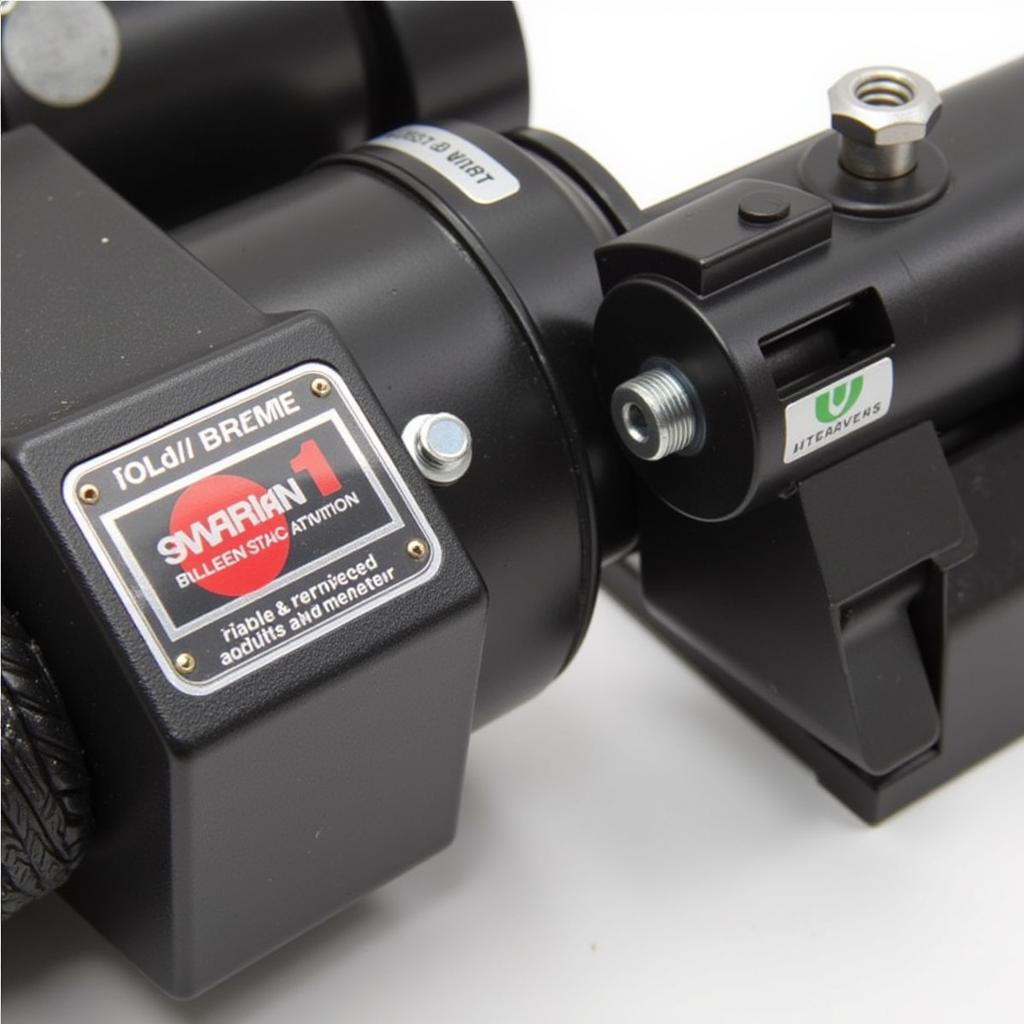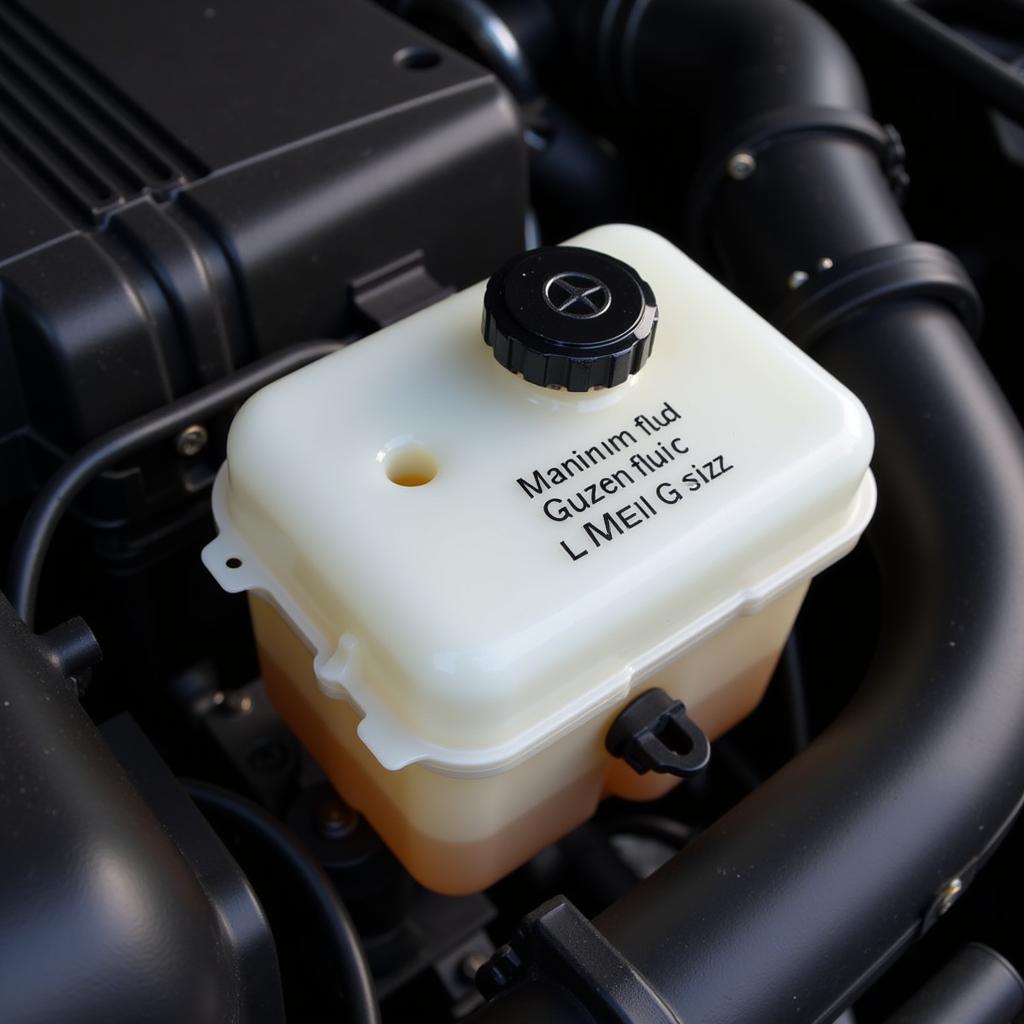A Warn winch brake is a critical safety feature that prevents your winch from unwinding unintentionally. Understanding how it works can help you maintain it properly and ensure its reliability when you need it most. This article will delve into the mechanics of a Warn winch brake, common issues, and maintenance tips.
The Inner Workings of a Warn Winch Brake
Most Warn winches utilize an automatic, mechanical brake system integrated into the winch drum. This system, often referred to as a “cone brake” or “brake ring”, works on a simple yet effective principle.
Here’s a breakdown of the process:
- Engaging the Brake: When the winch is not in use, a spring-loaded brake pawl is engaged with teeth on the brake ring or cone. This creates a strong locking force that prevents the drum from rotating.
- Releasing the Brake: When you power the winch in either direction, the winch motor drives a gear that forces the brake pawl to disengage from the brake ring. This allows the drum to rotate freely, spooling or unspooling the winch rope.
- Automatic Engagement: As soon as the winch motor stops, the spring immediately forces the brake pawl back into the locked position, effectively stopping and holding the load.
Common Warn Winch Brake Problems
While Warn winch brakes are designed for durability, several issues can arise:
- Worn Brake Components: Over time, the brake ring, pawl, or spring can wear down, reducing braking effectiveness.
- Improper Adjustment: If the brake is adjusted too loosely, it might not engage properly, leading to dangerous slippage. Conversely, an overly tight brake can cause premature wear and difficulty unwinding.
- Corrosion and Debris: Exposure to dirt, mud, and water can lead to corrosion or debris buildup within the brake mechanism, hindering its performance.
Maintaining Your Warn Winch Brake
Regular inspection and maintenance are crucial for optimal brake performance:
- Visual Inspection: Regularly inspect the brake components for signs of wear, damage, or debris. Look for cracks, excessive wear patterns, or broken parts.
- Cleaning and Lubrication: Clean the brake mechanism periodically using a suitable brake cleaner. Apply a light coat of high-temperature grease to the brake ring teeth and pawl for smooth operation.
- Adjustment: Refer to your winch’s user manual for specific adjustment procedures. Proper adjustment ensures reliable braking while minimizing wear.
 Adjusting a Warn Winch Brake
Adjusting a Warn Winch Brake
Warn Winch Brake Assembly and Specific Models
Understanding your specific Warn winch model is essential for proper maintenance and repair.
- Warn Winch Brake Assembly: The brake assembly is usually integrated into the winch drum and may require specialized tools for disassembly.
- Warn RT25 Brake: The Warn RT25, like many Warn models, utilizes a robust cone brake system for reliable holding power.
- Warn Brake Assembly for 3000 ACI Utility Winch 85388: Always refer to your winch’s model number, like the 85388, to obtain the correct replacement parts and service information.
 Warn Winch with Clock Brake System
Warn Winch with Clock Brake System
Importance of a Properly Functioning Winch Brake
A properly working winch brake is paramount for safety and preventing accidents:
- Controlled Load Lowering: The brake allows you to precisely control the speed of the load when lowering.
- Preventing Unintentional Unwinding: The brake prevents the winch rope from unspooling unexpectedly, especially crucial when holding a heavy load on an incline.
- Operator Safety: A functioning brake provides peace of mind, knowing that the load is secure and won’t release without your control.
Conclusion
Understanding how a Warn winch brake works empowers you to maintain it correctly and ensure its reliability. Regular inspection, cleaning, and proper adjustment are key to maximizing the lifespan of your winch brake and, most importantly, ensuring your safety during operation. Always consult your winch’s user manual for model-specific information and maintenance procedures.

